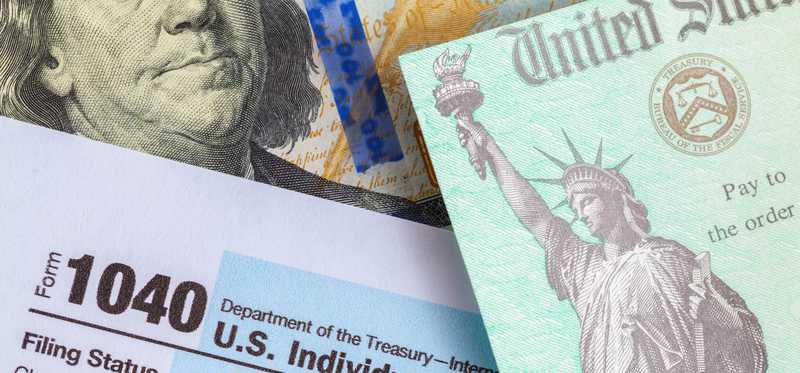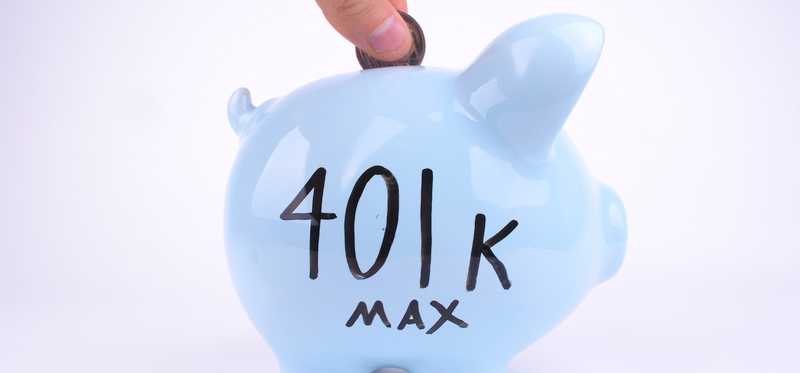15 Shocking Retirement Facts Every Current Worker Should Know

15 Shocking Retirement Facts Every Current Worker Should Know
Many of those in the workforce now don't know some key facts about retirement
Preparing for retirement is crucial if you want security in your later years. And there's a lot you need to know to make informed choices when setting goals for the future.
Unfortunately, current workers are often lacking in the basic knowledge they need to understand what's required for retirement readiness. You don't want to be one of them, so be sure you know these 15 shocking retirement facts.
5 Stocks Under $49
Presented by Motley Fool Stock Advisor
We hear it over and over from investors, "I wish I had bought Amazon or Netflix when they were first recommended by The Motley Fool. I’d be sitting on a gold mine!" It's true, but we think these 5 other stocks are screaming buys. And you can buy them now for less than $49 a share! Click here to learn how you can grab a copy of "5 Growth Stocks Under $49" for FREE for a limited time only.
Previous
Next

1. Just 53% of workers expect to have enough money to live comfortably in retirement
According to a 2021 Gallup poll, just over half of Americans think they'll have plenty of money in retirement. This statistic is troubling, because it means millions of people could find themselves struggling to make ends meet.
Knowing this fact is crucial, as you can put a plan in place to make sure you're in the small majority who is confident about your financial security later in life.
ALSO READ: 3 Key Retirement Realities Most Americans Don't Know
Previous
Next

2. The median retirement age is 62
The Employee Benefit Research Institute reports that the median age of retirement among current retirees is 62. This is a much younger retirement age than the age when many current workers anticipate quitting their jobs.
It's a big problem if you assume you'll be able to work longer than you can. If you end up having to retire at 62 when you planned to keep earning a paycheck for a while longer, you could find yourself with far too little saved to support yourself.
Previous
Next

3. Just 30% of people work for pay in retirement
The Employee Benefit Research Institute reported that 72% of current workers expect they will continue to be employed in some fashion even after retiring. Unfortunately, only 30% of current retirees report they're still getting a paycheck.
Planning to supplement retirement income with money from a job can seem smart, but it's a big problem if you end up not being able to work and earn money after all.
It's important to realize up front how slim your chances of working are so you can make sure you have enough savings that this isn't necessary.
Previous
Next

4. Social Security only replaces around 40% of pre-retirement income
There's a huge misunderstanding around what Social Security can actually do for you in retirement. The reality is that your benefits are intended to replace just 40% of pre-retirement earnings.
If you can't absorb a 60% reduction in your take-home pay after leaving work -- which most people can't -- you'll need to understand early on that Social Security won't provide you nearly the financial security you may have been hoping for. You must have additional money saved to live comfortably.
Previous
Next

5. Millions of Americans rely too much on Social Security
Sadly, many people do end up getting to retirement with too little supplementary income so they count on Social Security more than they should.
In fact, according to the Social Security Administration, 37% of men and 42% of women get 50% or more of their retirement income from their benefits. Since the average monthly Social Security check is just $1,657 in 2022, it's easy to see why this could be a big problem when it comes to financial security.
But you'll know this only if you understand the reality of this benefits program.
5 Stocks Under $49
Presented by Motley Fool Stock Advisor
We hear it over and over from investors, "I wish I had bought Amazon or Netflix when they were first recommended by The Motley Fool. I’d be sitting on a gold mine!" It's true, but we think these 5 other stocks are screaming buys. And you can buy them now for less than $49 a share! Click here to learn how you can grab a copy of "5 Growth Stocks Under $49" for FREE for a limited time only.
Previous
Next

6. Your Social Security benefit could shrink by up to 30% if you claim early
Social Security already isn't enough to live on even in the best of cases. But many retirees are surprised to find out that an early claim could end up slashing their benefits even further.
Retirees must wait until their full retirement age (FRA) -- between 66 and four months and 67 -- to claim their standard benefit. Those who put off claiming longer, up until 70, get a boost to this benefit.
But early claimers who start checks sooner than FRA will face benefit cuts. If you file for checks at 62 -- the first age you can -- and 67 is your FRA, you'll be looking at a 30% reduction in your standard benefit. This can make it even harder to make ends meet if you're reliant on Social Security.
ALSO READ: 3 Reasons Claiming Social Security at 62 Could Be the Best Choice
Previous
Next

7. Social Security benefit cuts could occur in the next decade
Social Security benefits are paid out of revenue coming into the program, as well as a trust fund. The revenue will keep coming indefinitely, but the trust fund could run out by 2033 or perhaps even sooner depending on economic conditions.
If the trust fund runs dry, a de facto benefit cut will occur. Retirees will get around three-quarters of what was promised to them.
Lawmakers could also take steps to stave off this big cut -- perhaps by making full retirement age later. Many of the proposals to make Social Security more financially solvent do involve cutting benefits in some way, so it is possible future seniors will need to rely on Social Security even less than today's retirees.
Previous
Next

8. Social Security benefits may be subject to tax
Retirees could find themselves facing a shocking surprise when their state government or the federal government takes taxes out of their Social Security.
The reality is there are 12 states where benefits are taxed for at least some retirees. And the IRS takes a cut of benefits if provisional income exceeds $25,000 for single filers or $32,000 for married joint filers. Provisional income is half of Social Security benefits, all taxable income, and some nontaxable income.
It's important to plan for the possibility of taxes as this further reduces the income Social Security can offer.
ALSO READ: 38 States That Don't Tax Social Security Benefits
Previous
Next

9. Social Security benefits have lost 32% of buying power
According to the Senior Citizens League, Social Security benefits have lost 32% of their buying power since 2000. This is because the periodic increases retirees are entitled to (called cost-of-living adjustments) aren't keeping pace with inflation.
Since the value of benefits is eroding over time, future retirees should make sure to realize their retirement checks won't stretch as far -- especially late in life.
Previous
Next

10. You should generally limit withdrawals to 4% of your retirement account balance -- or less
Savings is another source of income for most seniors. But your savings may not go as far as you think. You need to maintain a safe withdrawal rate so you don't take out too much money too quickly and drain your account dry.
A general rule of thumb is that you should start by withdrawing 4% of your account balance and then adjust upward each year to account for inflation. This would mean a $1 million nest egg would give you just $40,000 in income.
Some experts also warn that the 4% rule is outdated and no longer applies as life expectancies have lengthened and projected future returns have lowered. If you believe they are right, you may need to take even less out of your accounts each year.
5 Stocks Under $49
Presented by Motley Fool Stock Advisor
We hear it over and over from investors, "I wish I had bought Amazon or Netflix when they were first recommended by The Motley Fool. I’d be sitting on a gold mine!" It's true, but we think these 5 other stocks are screaming buys. And you can buy them now for less than $49 a share! Click here to learn how you can grab a copy of "5 Growth Stocks Under $49" for FREE for a limited time only.
Previous
Next

11. Healthcare could cost $361,000 during retirement
According to the Employee Benefit Research Institute, a senior couple turning 65 in 2021 would need $361,000 to cover healthcare costs in retirement if their prescription drug use is in the 90th percentile.
This includes premiums, co-pays, and other things Medicare won't pay for.
ALSO READ: Healthcare Could Be Your Greatest Retirement Expense. Here's a Great Way to Save for It
Previous
Next

12. There's a 70% chance you'll need some long-term care in retirement
According to LongTermCare.gov, a person turning 65 today faces around a 70% chance of needing some type of nursing care during retirement.
Medicare won't typically pay for nursing home or home care services, which means that you could be stuck covering these costs out of your own pocket as a senior. Many people aren't prepared for this because they think Medicare will pay the bills.
Previous
Next

13. The median cost of a private room in a nursing home facility is $108,405
Genworth's Cost of Care survey estimates the median cost of a private room in a nursing home at $108,405. A semi-private room and home care services also total thousands per month.
Preparing to cover these costs can be very difficult, but future retirees need a plan to make sure that a need for nursing care doesn't leave them bankrupt and destroy their chance to leave a legacy.
ALSO READ: Why Senior Housing Is 1 of the Best Real Estate Investments You Can Make
Previous
Next

14. The average 401(k) balance was $141,542 as of the end of 2022
Vanguard's report How America Saves shows that many Americans don't have nearly enough money to fund retirement.
Future retirees will want to make sure they have a retirement savings goal set and are working diligently toward it to have enough money to cover their costs once they are no longer getting a paycheck.
Previous
Next

15. The median 401(k) balance is just $35,345
Finally, Vanguard's report shows the median 401(k) balance is even lower than the average. That's because some very high balances skew the average upward.
If a person has a nest egg of less than $40,000, retirement income from savings would be virtually nonexistent. You can't live on Social Security alone because it's not designed to be your sole income source. Therefore, be sure you're investing as much as possible so your retirement account ends up with enough money in it to support you.
5 Stocks Under $49
Presented by Motley Fool Stock Advisor
We hear it over and over from investors, "I wish I had bought Amazon or Netflix when they were first recommended by The Motley Fool. I’d be sitting on a gold mine!" It's true, but we think these 5 other stocks are screaming buys. And you can buy them now for less than $49 a share! Click here to learn how you can grab a copy of "5 Growth Stocks Under $49" for FREE for a limited time only.
Previous
Next

Now you can better prepare for the future
By understanding these 15 crucial facts, you can make more informed choices about the amount of money you'll need for retirement and the different sources of income that can provide it.
The sooner you realize the truth about your later years, the more prepared you can be.
The Motley Fool has a disclosure policy.
Previous
Next
Invest Smarter with The Motley Fool
Join Over Half a Million Premium Members Receiving…
- New Stock Picks Each Month
- Detailed Analysis of Companies
- Model Portfolios
- Live Streaming During Market Hours
- And Much More
READ MORE
HOW THE MOTLEY FOOL CAN HELP YOU
-
Premium Investing Guidance
Market beating stocks from our award-winning service
-
The Daily Upside Newsletter
Investment news and high-quality insights delivered straight to your inbox
-
Get Started Investing
You can do it. Successful investing in just a few steps
-
Win at Retirement
Secrets and strategies for the post-work life you want.
-
Find a Broker
Find the right brokerage account for you.
-
Listen to our Podcasts
Hear our experts take on stocks, the market, and how to invest.
Premium Investing Services
Invest better with The Motley Fool. Get stock recommendations, portfolio guidance, and more from The Motley Fool's premium services.